Abstract
1. Physical analysis of two visco-elastic models was performed, to afford a quantitative basis for examination of a theory of slip as applied to mechanoreceptor adaptation. In one model the coupling force between skin tissue and receptor was considered to be purely viscous; in another it was supposed to consist of parallel viscous and elastic forces, representing the properties of a gel.
2. Predictions from the models were compared with experimental results from frog and rat skin receptors. Good fits with slope—latency and slope—amplitude curves were obtained, with the adjustment of two constants.
3. The excitability changes during long subliminal stimuli showed dynamic and static phases, which developed at different rates as stimulus strength was increased. This behaviour could be explained qualitatively by the more complex model, but quantitative comparisons could not be achieved.
4. Treatment of the skin with tissue-destroying enzymes caused changes in stimulus-response relationships consistent with predictions from the models. The effect of the enzymes seemed to be largely on the elastic coupling forces.
5. The visco-elastic model offers a satisfactory but not exclusive explanation of certain time- and amplitude-dependent features of mechanoreceptor behaviour and also accounts for a specific delay in mechanical excitation.
Full text
PDF

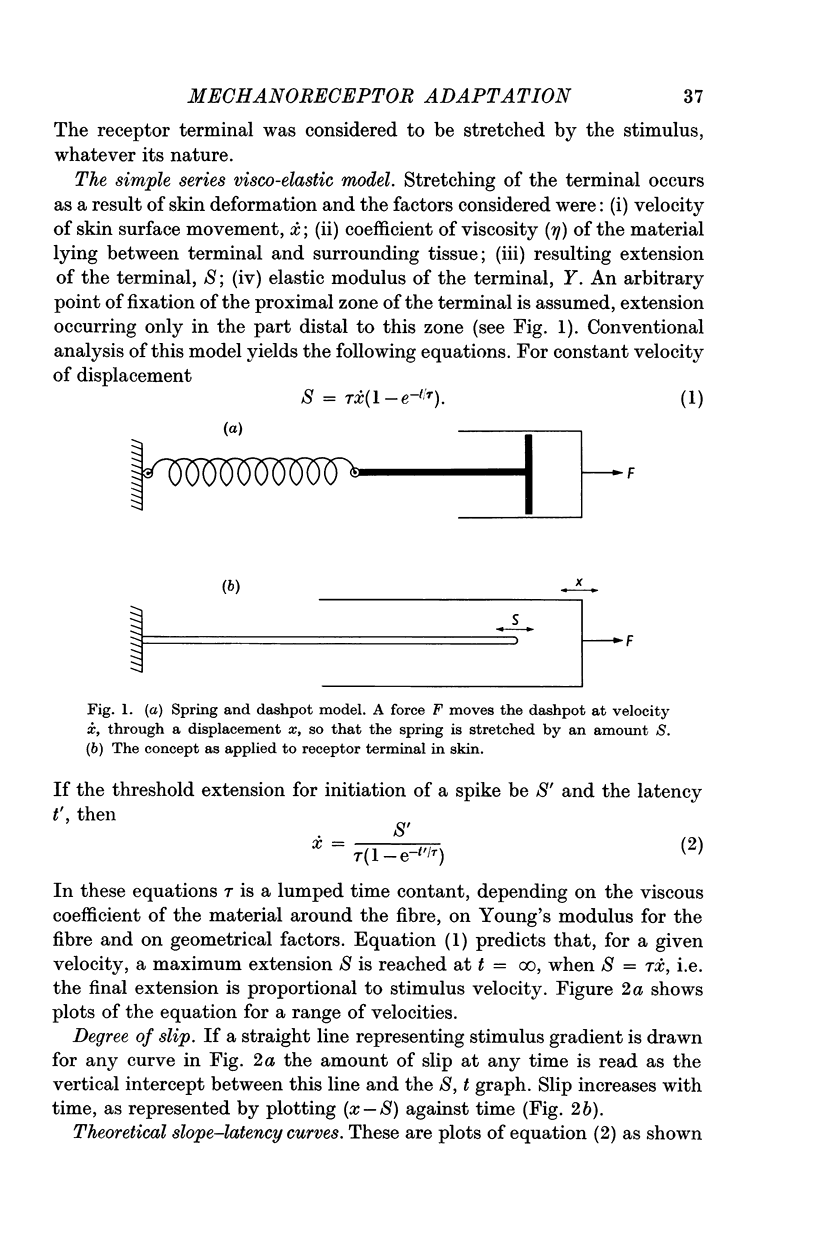
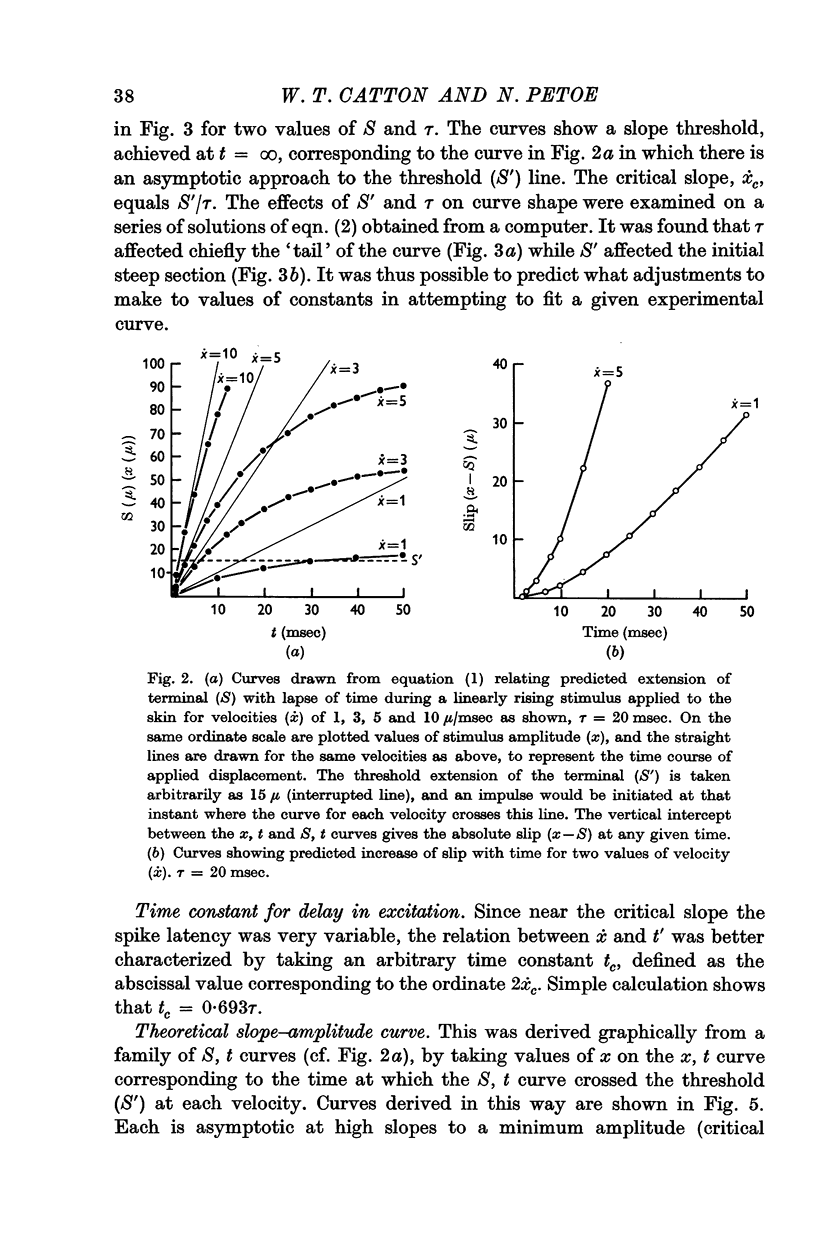
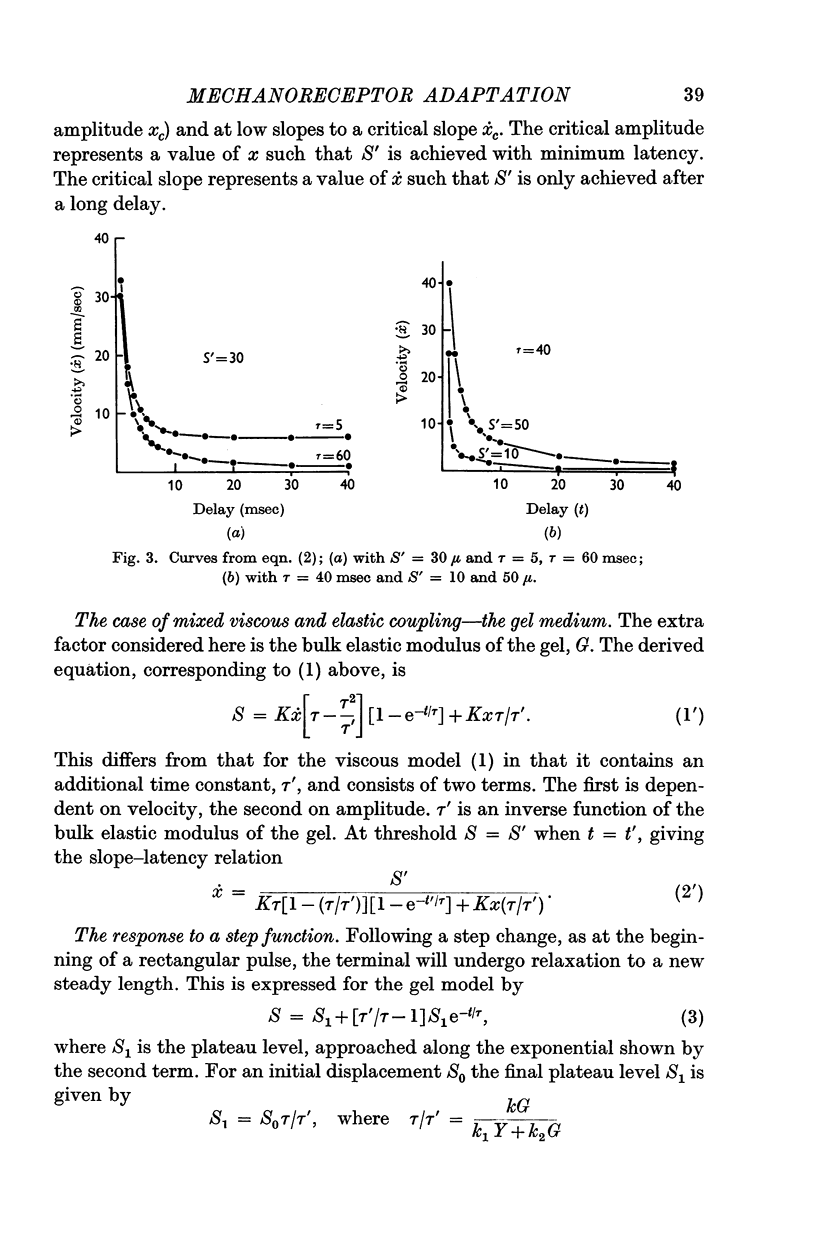

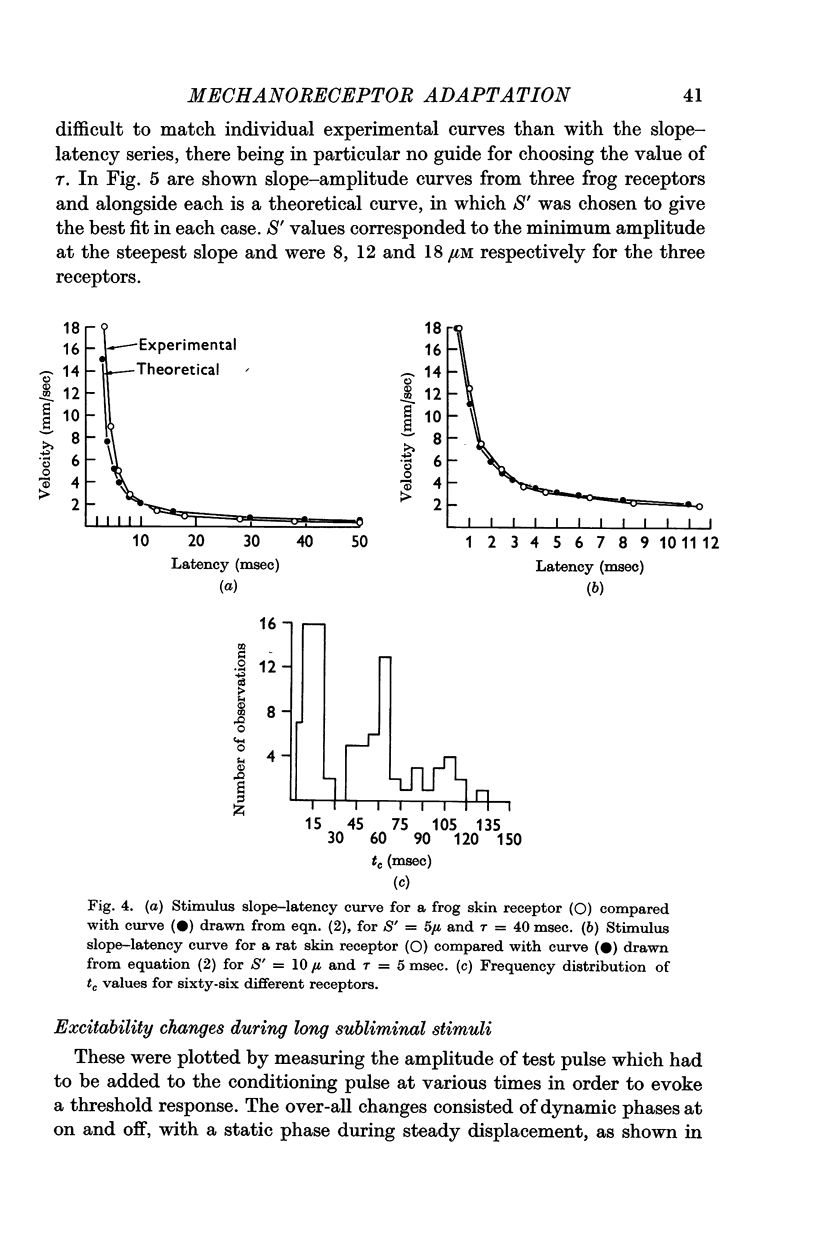


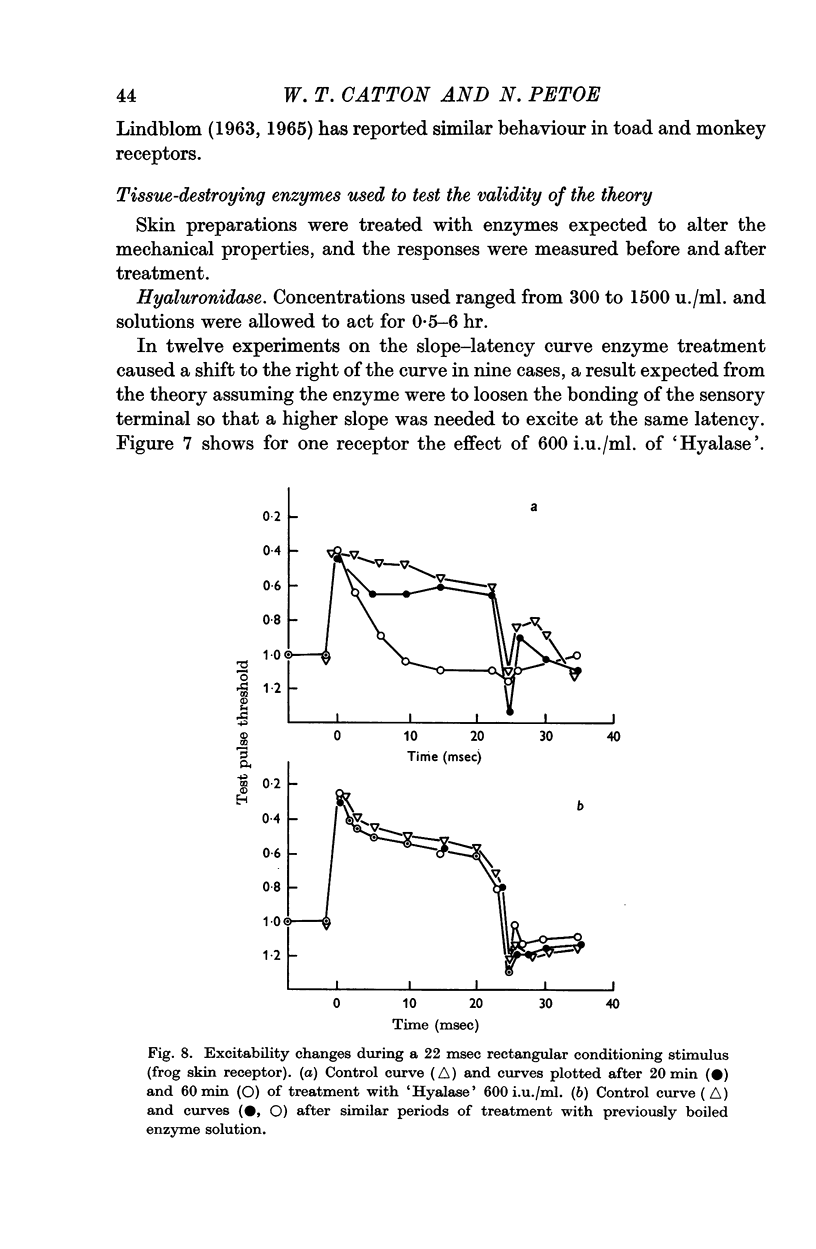
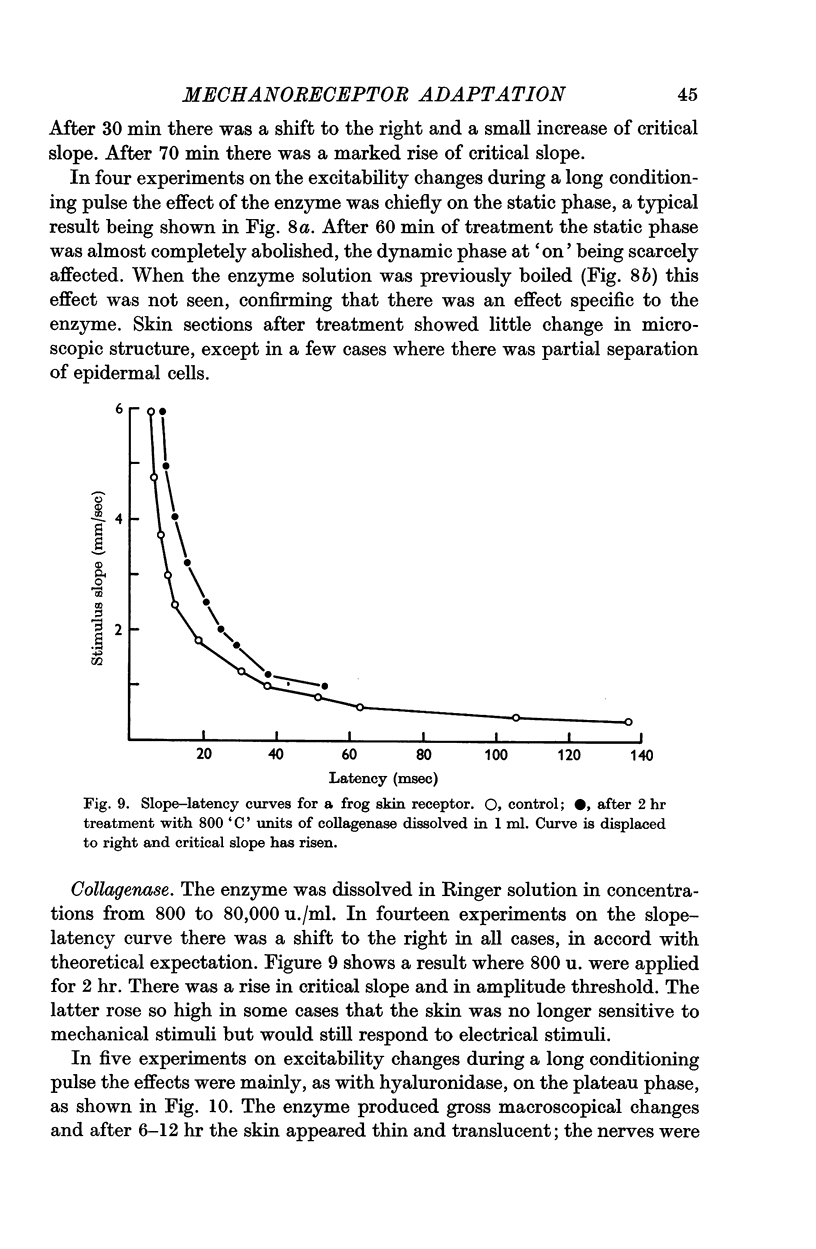


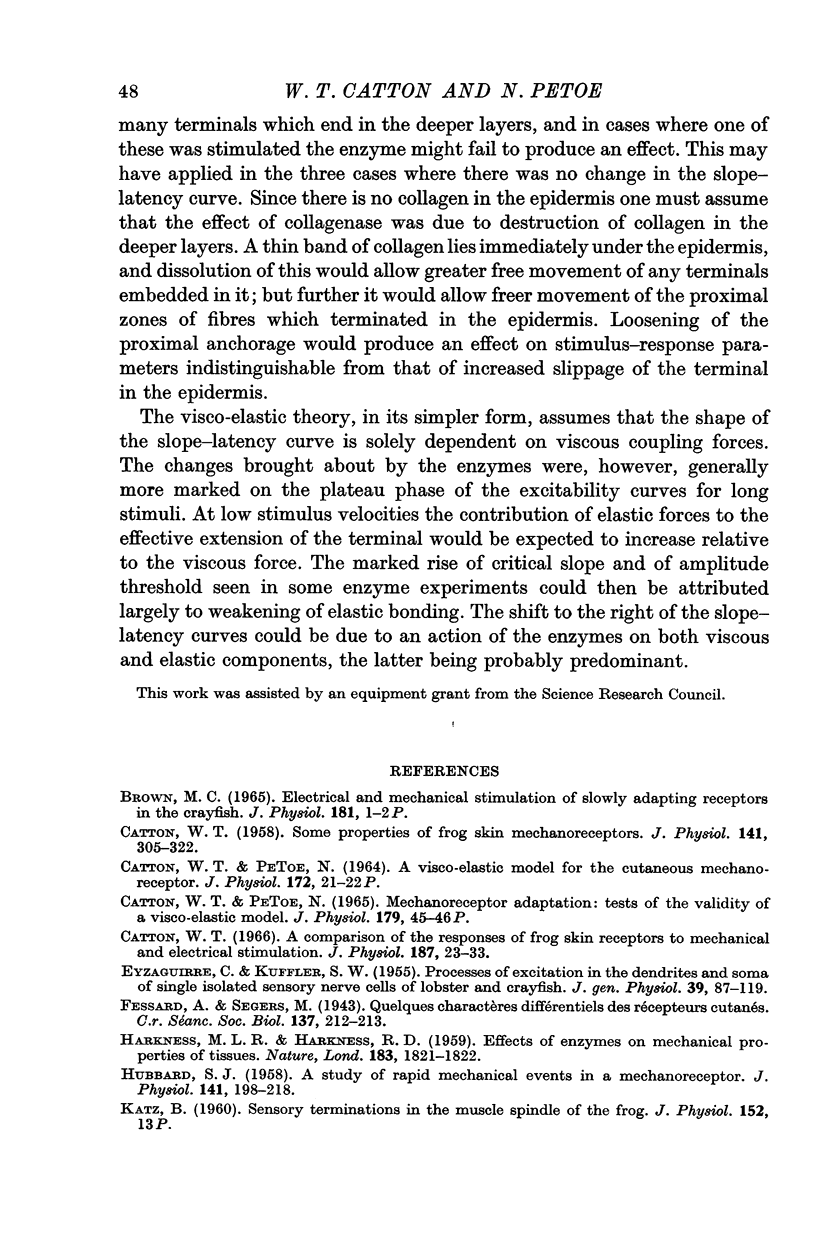
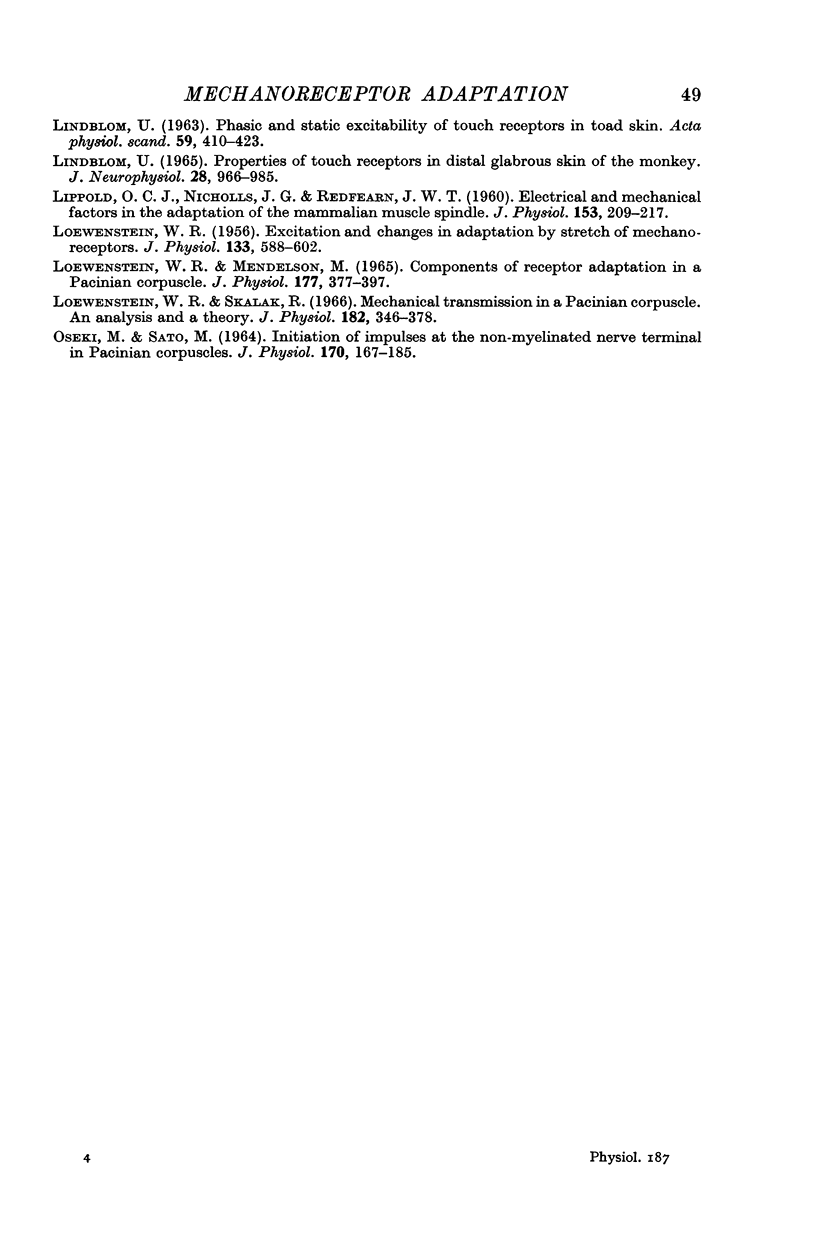
Selected References
These references are in PubMed. This may not be the complete list of references from this article.
- CATTON W. T. Some properties of frog skin mechanoreceptors. J Physiol. 1958 Apr 30;141(2):305–322. doi: 10.1113/jphysiol.1958.sp005975. [DOI] [PMC free article] [PubMed] [Google Scholar]
- Catton W. T. A comparison of the responses of frog skin receptors to mechanical and electrical stimulation. J Physiol. 1966 Nov;187(1):23–33. doi: 10.1113/jphysiol.1966.sp008073. [DOI] [PMC free article] [PubMed] [Google Scholar]
- EYZAGUIRRE C., KUFFLER S. W. Processes of excitation in the dendrites and in the soma of single isolated sensory nerve cells of the lobster and crayfish. J Gen Physiol. 1955 Sep 20;39(1):87–119. doi: 10.1085/jgp.39.1.87. [DOI] [PMC free article] [PubMed] [Google Scholar]
- HARKNESS M. L., HARKNESS R. D. Effect of enzymes on mechanical properties of tissues. Nature. 1959 Jun 27;183:1821–1822. doi: 10.1038/1831821b0. [DOI] [PubMed] [Google Scholar]
- HUBBARD S. J. A study of rapid mechanical events in a mechanoreceptor. J Physiol. 1958 Apr 30;141(2):198–218. doi: 10.1113/jphysiol.1958.sp005968. [DOI] [PMC free article] [PubMed] [Google Scholar]
- Kandel E. R., Tauc L. Heterosynaptic facilitation in neurones of the abdominal ganglion of Aplysia depilans. J Physiol. 1965 Nov;181(1):1–27. doi: 10.1113/jphysiol.1965.sp007742. [DOI] [PMC free article] [PubMed] [Google Scholar]
- LINDBLOM U. PHASIC AND STATIC EXCITABILITY OF TOUCH RECEPTORS IN TOAD SKIN. Acta Physiol Scand. 1963 Dec;59:410–423. doi: 10.1111/j.1748-1716.1963.tb02757.x. [DOI] [PubMed] [Google Scholar]
- LIPPOLD O. C., NICHOLLS J. G., REDFEARN J. W. Electrical and mechanical factors in the adaptation of a mammalian muscle spindle. J Physiol. 1960 Sep;153:209–217. doi: 10.1113/jphysiol.1960.sp006529. [DOI] [PMC free article] [PubMed] [Google Scholar]
- LOEWENSTEIN W. R. Excitation and changes in adaptation by stretch of mechanoreceptors. J Physiol. 1956 Sep 27;133(3):588–602. doi: 10.1113/jphysiol.1956.sp005611. [DOI] [PMC free article] [PubMed] [Google Scholar]
- LOEWENSTEIN W. R., MENDELSON M. COMPONENTS OF RECEPTOR ADAPTATION IN A PACINIAN CORPUSCLE. J Physiol. 1965 Apr;177:377–397. doi: 10.1113/jphysiol.1965.sp007598. [DOI] [PMC free article] [PubMed] [Google Scholar]
- Lindblom U. Properties of touch receptors in distal glabrous skin of the monkey. J Neurophysiol. 1965 Sep;28(5):966–985. doi: 10.1152/jn.1965.28.5.966. [DOI] [PubMed] [Google Scholar]
- Loewenstein W. R., Skalak R. Mechanical transmission in a Pacinian corpuscle. An analysis and a theory. J Physiol. 1966 Jan;182(2):346–378. doi: 10.1113/jphysiol.1966.sp007827. [DOI] [PMC free article] [PubMed] [Google Scholar]
- OZEKI M., SATO M. INITIATION OF IMPULSES AT THE NON-MYELINATED NERVE TERMINAL IN PACINIAN CORPUSCLES. J Physiol. 1964 Jan;170:167–185. doi: 10.1113/jphysiol.1964.sp007321. [DOI] [PMC free article] [PubMed] [Google Scholar]


